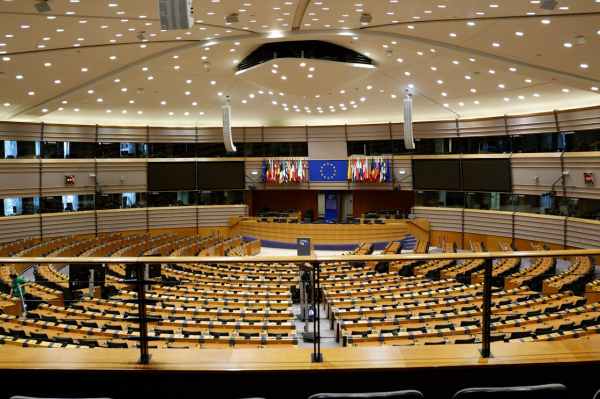In July, we started the series entitled EC White Paper, where we present Telefónica’s contribution to the public consultation on the White Paper. As a result of this consultation, the Commission will present a legislative proposal, the Digital Networks Act, which will determine the future of the European Union and the telecommunications sector over the next decade through a new regulatory framework.
The first post analysed the proposed future for the telecommunications sector. The second post identified the new challenges facing the new Commission. The third post addressed the Internet imbalance. The fourth post explained the challenges of access regulation. The fifth post delved into whether the regulatory model limits innovation in the telecoms sector. In this sixth post we will explain the relevance of Taxonomy to mobilise investment towards more efficient next generation networks.
EU Taxonomy: A Tool to Mobilize Investment in Network Rollout and Align Telecommunications with European Green Goals
The need to mobilise investment in networks is widely recognised in Europe. In 2023, the European Commission published a study, commissioned to WIK-Consult, revealing a €200 billion investment gap that the European Union must address to meet the connectivity goals set forth in its Digital Decade. This figure, which in our opinion is a conservative estimate, was taken up by Mario Draghi in his report “The Future of European Competitiveness“, stressing the need to boost investment in the deployment of next-generation telecommunications networks.
In the same vein, in his report “Much More Than a Market” Enrico Letta recognises the importance of “incentivizing the necessary investments to bridge its growing connectivity investment gap”. He also highlights the role of networks in sustainability, stating that “a healthy and secure electronic communication sector is crucial for the green transition [innovation, and resilience] of the Union”.
More recently, during the November hearings, Henna Virkkunen, Commissioner for Tech Sovereignty, Security and Democracy, addressed the increase in energy consumption expected in the coming years due to digitalisation and new technologies, such as artificial intelligence, emphasising the importance of converging the digital transformation with green targets.
The need to mobilise investments and to align digital and green objectives makes the inclusion of telecom networks in the Taxonomy a key tool for advancing towards a more sustainable and competitive telecommunications infrastructure. It should feature prominently in legislative initiatives to be proposed by the European Commission over the coming year.
Proposal for the Inclusion of a New Telecommunications Network Activity in the Taxonomy
In our previous publication, we highlighted the energy efficiency of next generation network deployments, as well as Telefónica’s track record in green finance over the years to accelerate its decarbonisation. In addition, we explained the role that the EU Taxonomy will play in defining the European model for sustainable financing. Considering this scenario, the mobile industry has proposed creating a new telecoms network activity in the forthcoming review of the Taxonomy’s Climate Delegated Act. This initiative aims to drive investment toward the deployment of more efficient networks, supporting the European Union’s dual objectives of achieving climate neutrality and advancing the Digital Decade agenda.
The Taxonomy already includes other grids as eligible activities, such as activity 4.9 “Transmission and distribution of electricity”. The rationale is that electricity networks enable the flow of renewable energy, bringing it from the point of generation to the point of consumption, and contribute to reducing greenhouse gas emissions. The rationale for including telecommunication networks is not very different: they enable more efficient information flows that allow operators, businesses and consumers to reduce emissions.
The Code of Conduct for Telecommunications Networks as a Technical Criteria for the New Activity
To include this new activity in the Taxonomy, it is essential to establish a technical criteria that ensures telecommunications networks deployed contribute to the emission reduction objective.
The European Commission is currently working on a Code of Conduct for telecommunications networks that can serve as a basis for developing the technical criteria. However, given that this Code may not be finalised before the end of the Climate Delegated Act review period, we propose to act urgently by adopting a technical criteria based on robust indicators used by the industry to assess the efficiency of networks. Developing indicators was precisely a motivation for the report that the Joint Research Centre of the European Commission, together with DG Connect, published in 2024. The report outlines a set of science-based KPIs to measure the environmental impacts of networks, and can be a starting point for developing a new activity in the Taxonomy on electronic communications networks.
In the next post we will delve into more detail on spectrum policy and band allocation.









